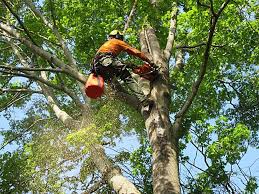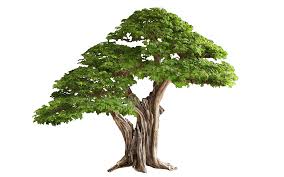 July 2018
July 2018
Healthy trees play an important role in how condo properties look from the outside.
Trees are a large part of condo landscaping that involves more than watering and pruning. Maintaining healthy trees in a high-rise condo setting requires more work than many would think.
Tree selection begins with identifying the right tree for an area and properly locating it. Factors considered include identifying compatible trees and plants, purpose, soil type, species, light exposure and growth rate. Tree specialists assist in balancing these variables to fit the needs of a community.
Well-chosen trees can look good all year, require less maintenance, and are less likely to rot. Mimosa trees are popular because of their look when blooming but attract webworms. Seeds spread and can result in unwanted smaller trees sprouting the next year. Oak trees need a large amount of space and can create undesirable shadow area over a large space. Tree roots that damage a building foundation or tree are to be avoided.
Poor tree or location selection will cause problems. Selecting locations that will minimize root damage, foundation damage and undesirable shady areas are important factors.
Under-watering of trees is evident by wilting, yellowing of interior foliage or loss of foliage. Over-watering can cause root rot with symptoms not be evident until irreversible.
As trees mature they can have problems that require care. Pruning, the cutting away of dead or overgrown branches, helps to minimize problems and facilitates future growth. Broken limbs, those that are dead or sick, and any that are a potential falling hazard should be removed.
Effective tree planning and planting can eliminate potential risks of property damage and human health.
All plantings can periodically be infested by insects or pests. Asian longhorned beetle larvae will tunnel in trees and weaken branches. They feed on tree foliage and can make the tree vulnerable to disease, pests and breakage. The gypsy moth, one of the most widespread tree-feeding insects in North America, is another concern. A massive number of chestnut trees infected with chestnut blight have been destroyed.
There are techniques for protecting trees from harm and bringing them back to good health. These include insecticides and applications to protect against disease.
 Tree professionals know what to look for when assessing the condition of a tree and how to treat or protect it. Early assessment and treatment can save a tree from unnecessary destruction. Tree removal is usually limited to when a tree is too ill or structurally compromised to preserve.
Tree professionals know what to look for when assessing the condition of a tree and how to treat or protect it. Early assessment and treatment can save a tree from unnecessary destruction. Tree removal is usually limited to when a tree is too ill or structurally compromised to preserve.
Tree planting and care is not a job for amateurs. It is best to work with experts in this field.



